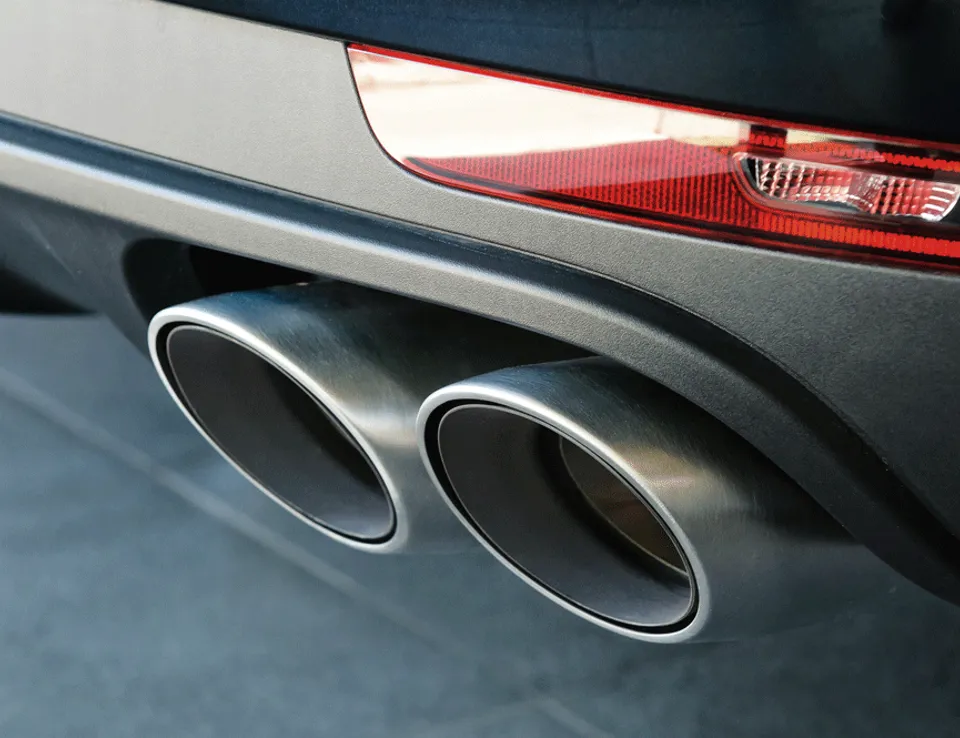
Diesel particulate filters: proving success?
While current air pollution concerns are focused on NO2, it is easy to forget the importance of particulate matter (PM).
The impact that fine particles (PM2.5) have on human health is well-established, based on research that has been refined over the last two decades. The often-quoted number of 29,000 early deaths per year for the UK is based on the impact of fine particulates. Indeed, the findings from this research underpin the development of stricter emission limits for road vehicles.
Diesel vehicles have long been known to be an important source of emissions of PM. One of the most important changes to vehicle emissions control technologies in recent years has been the widespread adoption of diesel particulate filters (DPF).
For diesel passenger cars, the use of DPF effectively became mandatory for Euro 5 vehicles, which were introduced in 2010. However, some manufacturers fitted DPF to Euro 4 vehicles.
Our vehicle emission remote sensing data provides evidence for the efficacy (or otherwise) of DPFs in reducing PM emissions. PM can be measured using optical absorption methods in both the infrared (IR) and ultra violet (UV) wavelengths. The IR region is not ideal for this purpose but does provide some indication of PM emissions from vehicles. A better measurement can be made in the UV region at about 250 nm where black carbon diesel exhaust PM (i.e. soot) has strong absorption, which is used in the analysis below.
Ricardo is currently piloting remote sensing measurements around the UK. Our vehicle emissions database currently holds 50,000 real-world driving emission measurements from road vehicles and we anticipate that this number will exceed 100,000 by the end of 2017.
The database offers great insight into the behaviour of vehicle emissions under real-world driving conditions including a window into the performance of DPF technologies.
Figure 1 below shows the change in PM emissions for diesel passenger cars by euro standard. These results show very clearly the dramatic reduction in PM emissions for Euro 5 and 6 diesel cars (which have DPF technology fitted) compared with the emissions from earlier Euro classes.
The approximate 50% reduction in PM for Euro 4 compared with Euro 3 shows that some Euro 4 vehicles were being fitted with DPF technology earlier than strictly necessary in anticipation of Euro 5. These results are entirely consistent with the changes expected due to the adoption of DPF in diesel passenger cars.
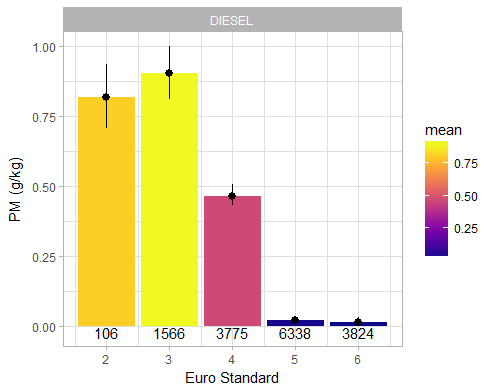
Figure 1: Mean emission of PM for diesel passenger cars split by Euro classification. The numbers below the bars show the number of valid measurements. Note the units are grams of PM per kg of fuel burnt and the error bars show the 95% confidence interval in the mean.
Figure 2 below further supports this point, highlighting that emissions of PM have clearly fallen since 2005 when Euro 4 standard vehicles were introduced. Indeed, cars produced in the last 5 years or so have PM emissions that are below the detection limit of the instrument. Such a trend is in fact a major success story for controlling PM emissions from vehicles and it is difficult to think of another example (except perhaps the removal of sulphur and lead from fuels) where there has been such a dramatic reduction in emissions over such a short period of time.
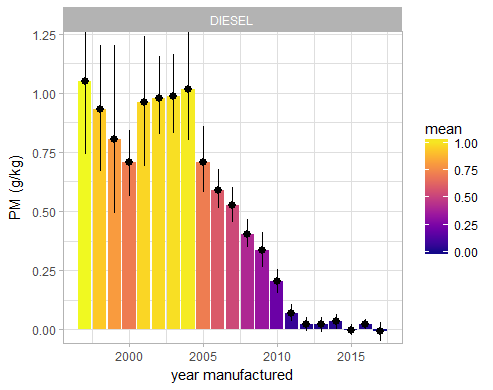
Figure 2: Mean emission of PM for diesel passenger cars split by year of vehicle manufacture.
Another interesting aspect to consider is whether there is any evidence for significant removal of DPF filters in the diesel passenger car fleet – and at what levels any DPF removal could be detected in our data.
This issue is mainly driven by fears over fuel economy penalties associated with adopting DPF technology and concerns with DPFs getting blocked. Various sources have suggested that the removal of DPF could be significant – see here for example. The problem is that it is very difficult to know how widespread this practice is and therefore whether there is any discernible effect on emissions of PM.
Ricardo’s remote sensing data for Euro 5 and Euro 6 vehicles helps to answer this question. Our data demonstrate that PM emissions are very low, indicative of efficiently functioning DPF and therefore no evidence of significant levels of DPF removal.
With the data we have collected so far it is possible to provide an indication of the proportion of vehicles without a DPF that would be needed if they were to be detected through our measurements.
One way of estimating the effect of potential DPF removal is running simulations based on the random sampling of the data. Assuming, for example, that a Euro 6 vehicle with its DPF removed emits like a Euro 3 vehicle (i.e. with no DPF), increasing proportions of Euro 6 vehicles with DPF removed can be considered.
In this case, we have removed different random samples of Euro 6 vehicles and replaced them with the same number of random samples from Euro 3 vehicles for different proportions of DPF removal for 0% (no DPF removal) to a 20% removal rate in the fleet.
The results are shown in the plot below, and highlight that it might be possible to detect DPF removal at a 1% rate. However, for DPF removal rates from 5% and above it becomes much clearer that the removal can be detected.
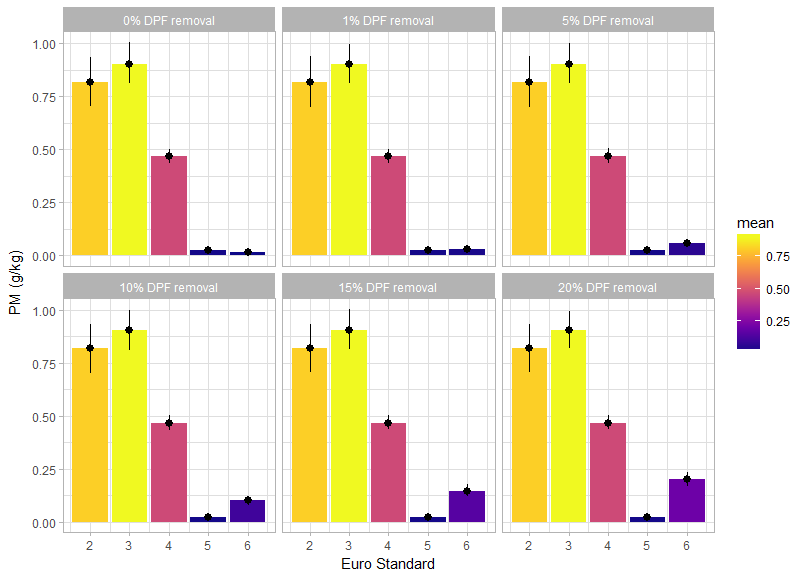
Figure 3: Example simulations of different rates of DPF removal from Euro 6 diesel cars.
These results would also highlight if there was any indication of gross failure of DPFs or issues related to degradation. The statistical power of these types of analysis techniques and the value of real-world emissions data will increase as our database grows. Additionally, by considering vehicle age effects, it should become clear whether DPF are robust and reliably removing PM from diesel vehicle exhaust.
It is also useful to consider the evidence from ambient measurements of PM. Given the ‘sooty’ characteristics of diesel PM, measurements of black carbon (BC) provides the strongest indicator of how diesel PM emissions have changed over time. The plot below shows how concentrations have changed since 2009 at the Marylebone Road site in London.
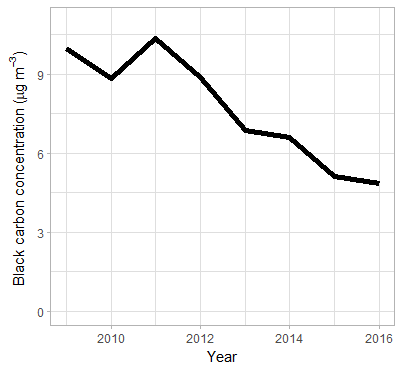
Figure 4: Trend in the annual mean black carbon concentration at the Marylebone Road site, 2009 to 2016.
BC concentrations at Marylebone Road have reduced by about a factor of two between 2009 and 2016; one of the largest changes in concentration observed for any pollutant measured at this location.
This trend is consistent with an increasing proportion of diesel vehicles in the fleet that have DPF fitted and operational. It is important to remember that the changes in BC concentrations at this site include emissions contributions from vehicles other than diesel passenger cars fitted with DPF. Nevertheless, these trends in ambient BC concentration provide further strong evidence that DPFs are proving to be effective.





 Follow Ricardo plc for regular updates
Follow Ricardo plc for regular updates




